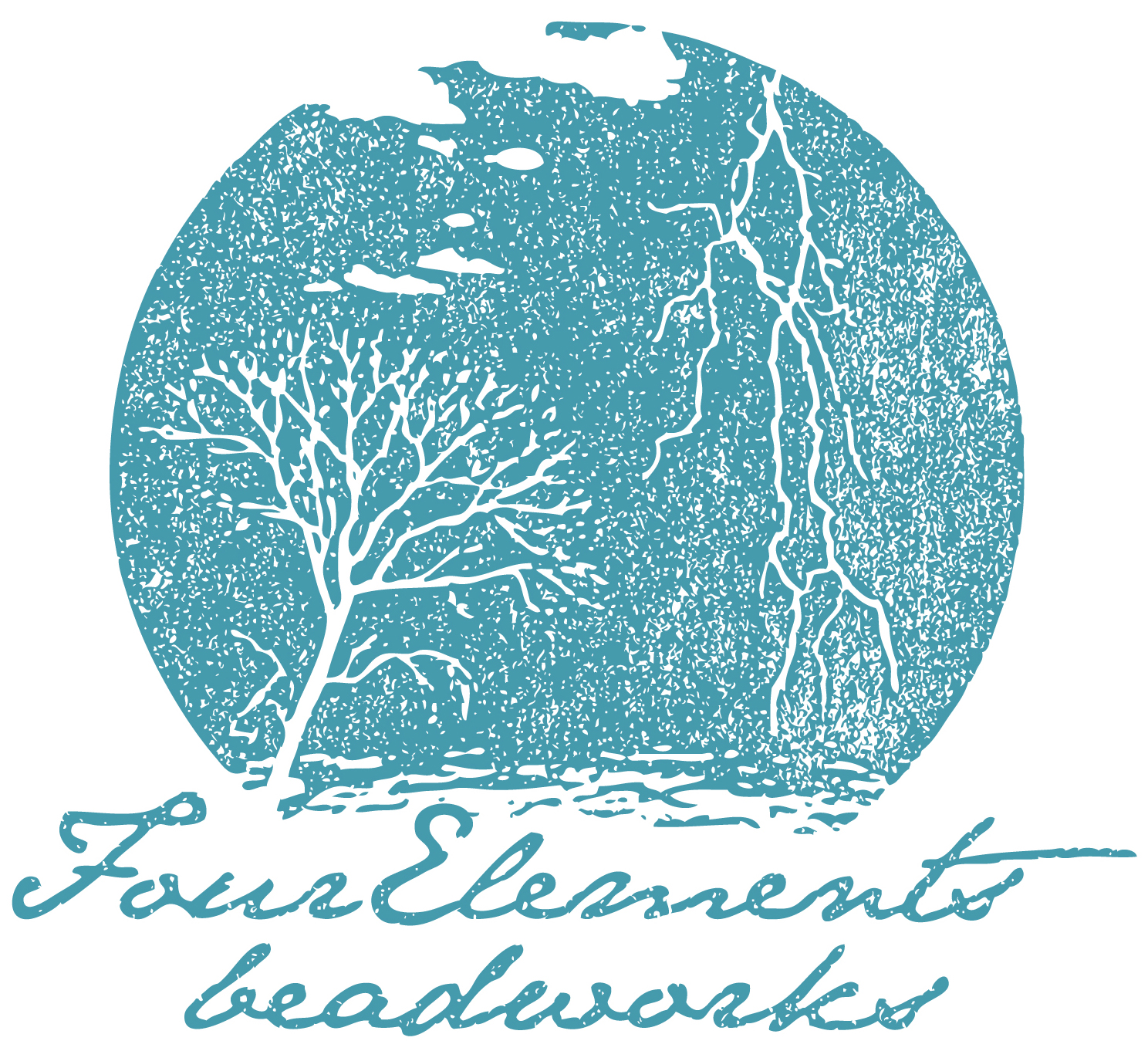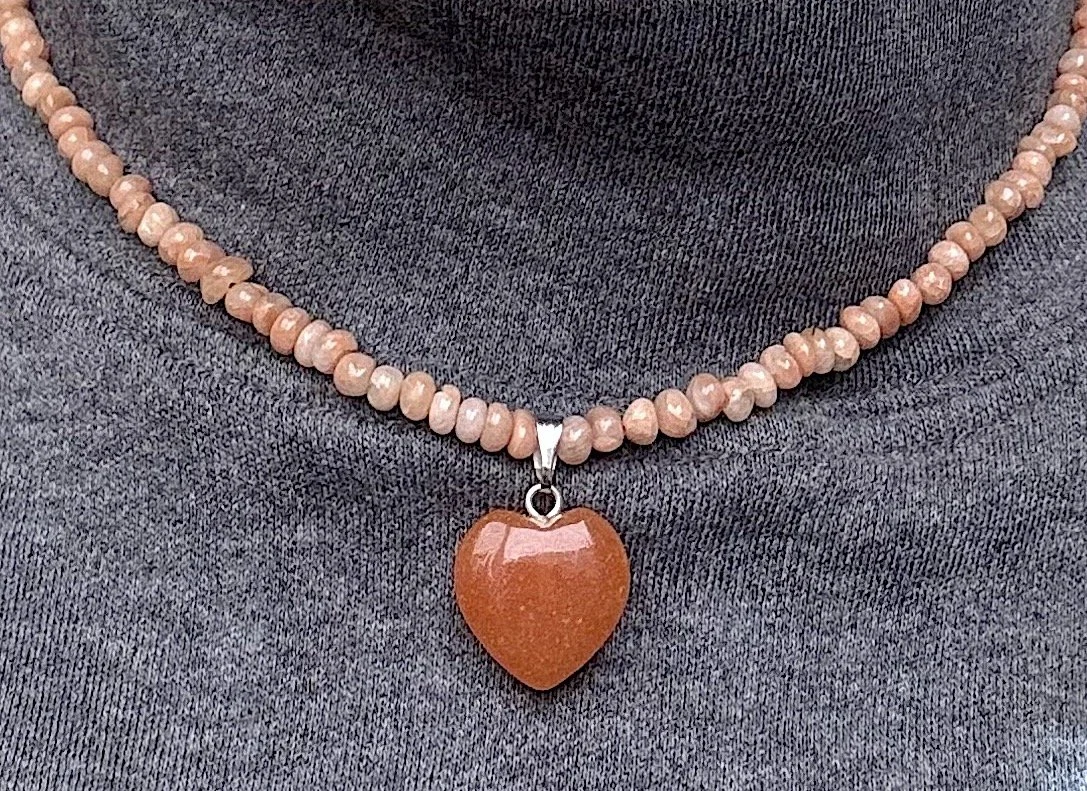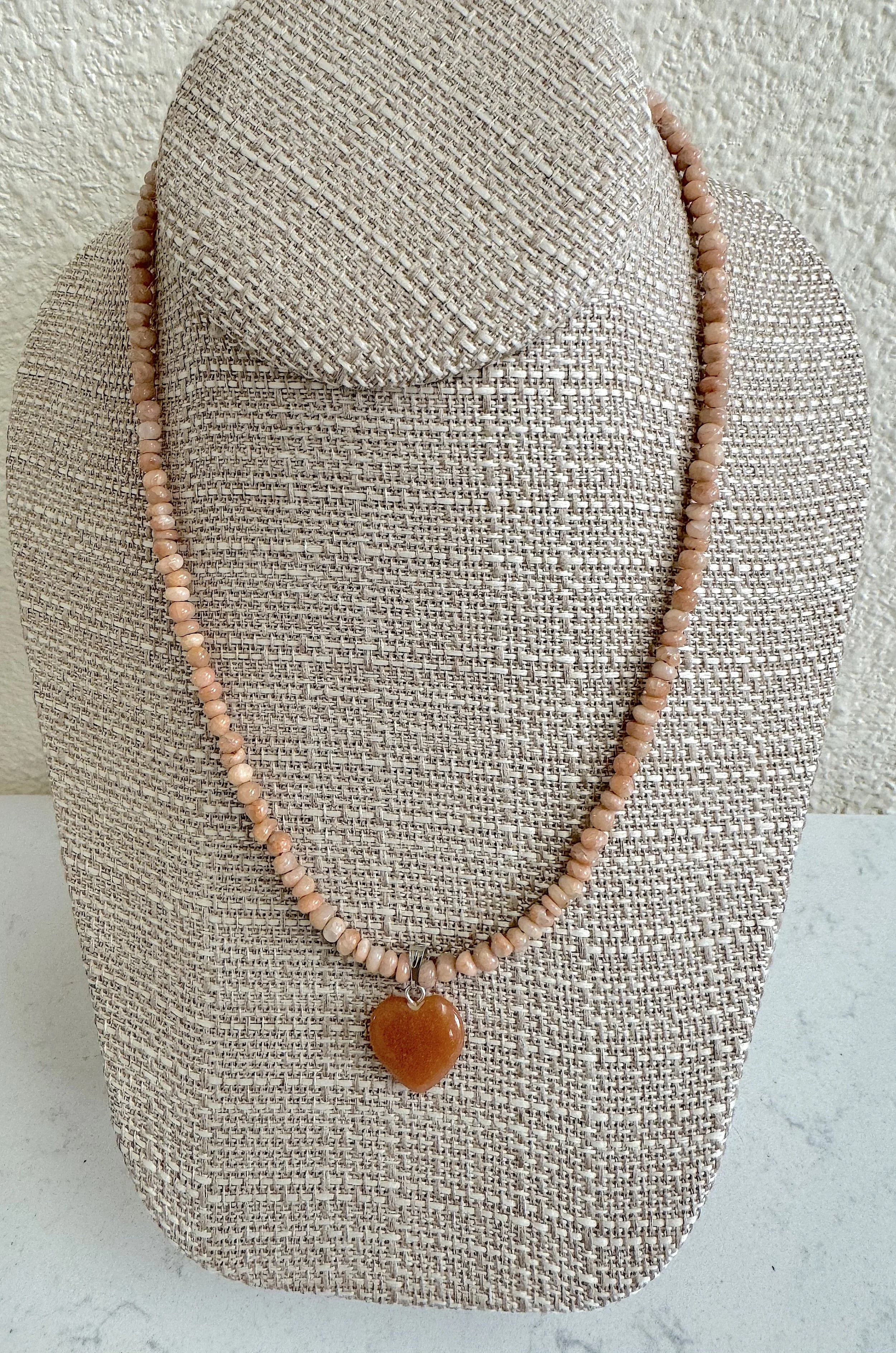Red Aventurine heart necklace
Red Aventurine heart necklace
Red Aventurine heart boasts a necklace of Rose Jasper rondelles and the Red Aventurine heart drop. I also used Delica Glass spacer beads and a pewter heart shaped toggle clasp to finish this piece. It's 17 inches long.
According to crystalvaults.com, "Red Aventurine is a “can do” stone of vitality and renewal, creating confidence and capability wherever it is needed. Use to regain physical strength when recovering from illness or injury, wear or keep near the bed to restore a healthy libido, or use to find new inspiration for those who rely on creativity for their livelihood. It is particularly supportive for those who work long hours, need to sustain focus or lecture for long periods, or are required to continuously produce new ideas. [Ahsian, 58][Eason, 76]
Red Aventurine is a protective stone, traditionally used against theft, fire, and lightning strikes. It is good for use in travel, especially against traffic accidents. [Eason, 76]
Wearing Aventurine absorbs electromagnetic smog and guards against environmental pollution. Taped to a cell phone, it protects against its emanations. [Hall, 73]
Aventurine may be made into an elixir to drink or used in ablutions by soaking a stone fragment in demineralized water overnight (we recommend the indirect method). It is highly beneficial for fighting eczema, rosacea, juvenile acne, and other skin problems. [Megemont, 36]
Aventurine is ideal for soothing quick-tempers or brutal temperaments, and can greatly diminish the effects of domestic strife between spouses. [Megemont, 36] A dish of Red Aventurines creates harmony between siblings, and is a good crystal to wear or carry when organizing a children’s’ party or attending family events to take everything in stride. [Eason, 76]"
"he unique artistry of Jasper is that of Nature itself – golden sunshine, a nighttime sky, poppy fields or a deep green forest, desert sands, the undulating ocean, red rock canyons, sweeping mountains. Each stone is a masterpiece of the Creator, bold and primitive in style, solid and earthy in form, with a warm, harmonious energy that resonates with the primal self.
An elemental Earth stone, Jasper’s frequency is slow and constant, aligned with the electromagnetic energies of the planet. It enables one to be more present in the physical body and conscious of Nature and one’s surroundings. It encourages one to celebrate moments of isolation to absorb, reflect, and connect with these energies and enkindles an awareness of the spiritual connection we hold with all living things. [Simmons, XXIX, 215-219][Melody, 344-345]
Known as the “Supreme Nurturer,” Jasper is a stone of grounding and stability, providing comfort and security, strength and healing. Its presence balances the aura to a level of wholeness and peace, and acts as a reminder that one is not here on the physical plane simply for oneself, but to bring joy and substance to others. [Simmons, 215-219][Melody, 344-345][Hall, 154-155][Margherita, 505-507]
Historically, Jasper is traceable to all ancient peoples and civilizations. Worn by shamans, priests and kings, it was considered sacred and a powerful protection stone, for both the physical world and in the spiritual realm. Amulets of Jasper were carved by the Egyptians with symbols and inscriptions from the Book of the Dead and buried with mummified remains for safe passage in the after life. It was highly utilized in many cultures for engraving cylinder seals, signet rings, and special talismans depicting astrological and religious images. It was the twelfth stone in the Breastplate of the Jewish High Priest, and the apostle Peter is supposed to have derived his name from Jasper, the rock upon which Christ would build his church. To the medieval world and the Native Americans, Jasper was “the rain bringer” and highly regarded as a stone for dowsing. [Mella, 87-88][Melody, 344-345][Kunz, 90, 122, 226-229, 276][Fernie, 199]
Jasper is a dense, opaque, microcrystalline variety of Quartz. Fibrous and grainy varieties of Quartz are often grouped together and referred to as Chalcedony, though Jasper’s microcrystals are laid out in large, sugar-like grains rather than the fibrous layers of Chalcedony or Agate. It occurs in nodules or as fillings in fissures and may be found all over the world, in nearly every color. Jasper is colored by oxides of iron and known for its deep earthy tones of red, yellow, brown and green, sometimes in shades of blue or purple, and displays wonderful contrasts in its banding, inclusions, “pictures,” and small circular patterns. Its name is derived from the Greek iaspis, meaning “agate,” the Assyrian ashpu, and the Hebrew jashpeh. [www.mindat.org][Simmons, 215][Lecouteux, 177][Megemont, 100][Fernie, 173]
There is a wide variety of Jaspers, characterized by color, form, and similarities to places or animals found in nature. Many are named for the regions where they are mined; others are named by those who discovered them. Though far too extensive to cover here, we will mention a few of the more popular and familiar Jaspers, some with their own pages and additional metaphysical properties. Multi-colored Jasper carries the properties of its dominant color, or colors, while still drawing energies from its subtle hues."
This is a great little everyday necklace that looks great and can potentially be very beneficial!






